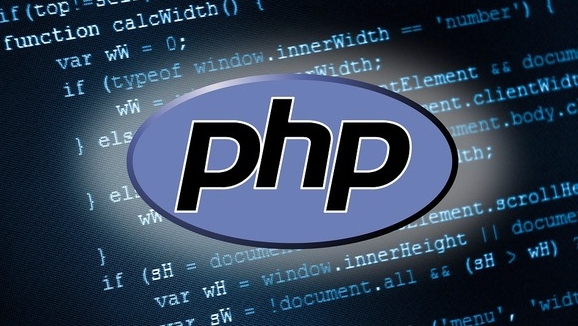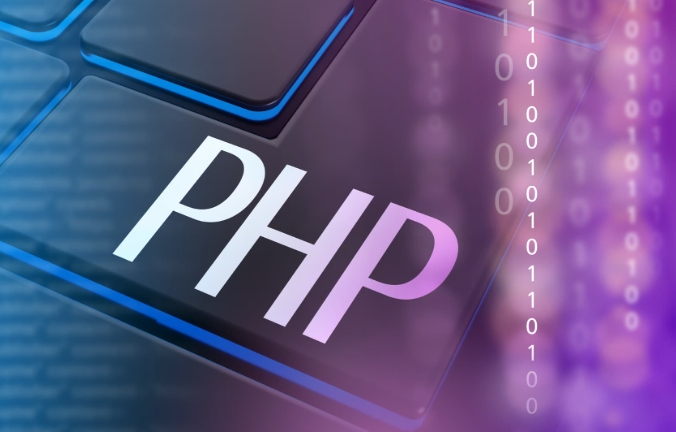 Backend Development
Backend Development
 PHP Tutorial
PHP Tutorial
 A must-have for beginners: Steps to easily install a PHP development environment
A must-have for beginners: Steps to easily install a PHP development environment
A must-have for beginners: Steps to easily install a PHP development environment
Jun 28, 2025 am 02:10 AMUsing XAMPP or MAMP to build a PHP development environment is simple and efficient, suitable for beginners. 1. Download and install XAMPP or MAMP, start Apache and MySQL services; 2. Create a project folder in the htdocs directory and place a .php file to access it through http://localhost/ project name; 3. Write a test script to verify whether the connection between PHP and MySQL is successful; 4. Optionally install code editors such as Visual Studio Code or PHPStorm to improve development efficiency. Follow these steps to quickly build a local PHP development environment.

Setting up a PHP development environment doesn't have to be complicated, especially for beginners. The key is to take it step by step and use tools that simplify the process.

Use XAMPP or MAMP – They Do Most of the Work
One of the easiest ways to get started is by using a pre-configured package like XAMPP (for Windows, macOS, and Linux) or MAMP (mainly for macOS and Windows). These tools bundle Apache, MySQL, PHP, and phpMyAdmin into one installer, so you don't have to set each component individually.

- Download the version that matches your operating system.
- Run the installer and follow the on-screen instructions.
- Once installed, start Apache and MySQL from the control panel.
These tools handle the configuration for you, which saves time and avoids common setup issues.
Set Up Your Project Folder Properly
By default, XAMPP uses the htdocs folder inside its installation directory, while MAMP uses the htdocs folder inside the MAMP folder. This is where you'll place your PHP files so they can be accessed through the local server.

- Create a new folder in
htdocs, likemyproject. - Place your
.phpfiles inside this folder. - Access them via your browser at
http://localhost/myproject.
Make sure file names are simple and lowercase, and avoid spaces or special characters to prevent errors.
Test PHP and MySQL Together
Once everything's running, it's good to test if PHP and MySQL work together. Create a simple PHP file that connects to the database.
Here's how:
- Open a text editor and create a file named
test.php. - Paste in a basic PHP script that connects to MySQL using mysqli.
- Save it inside your project folder in
htdocs. - Open your browser and go to
http://localhost/myproject/test.php.
If you see a success message (or no error), you're good to go. If not, check your MySQL service status and credentials.
Optional: Install a Code Editor
While not required, a code editor like Visual Studio Code or PHPStorm makes writing and debugging PHP much easier. Features like syntax highlighting, auto-completion, and built-in terminal support help streamline your workflow.
- Download and install your preferred editor.
- Install PHP extensions/plugins for better integration.
- Open your project folder and start editing.
It might seem optional, but having a solid editor helps catch mistakes early and speeds up development.
Basically that's it. Start with XAMPP or MAMP, organize your files correctly, test the basics, and use a decent editor. It's straightforward once you know where to begin.
The above is the detailed content of A must-have for beginners: Steps to easily install a PHP development environment. For more information, please follow other related articles on the PHP Chinese website!

Hot AI Tools

Undress AI Tool
Undress images for free

Undresser.AI Undress
AI-powered app for creating realistic nude photos

AI Clothes Remover
Online AI tool for removing clothes from photos.

Clothoff.io
AI clothes remover

Video Face Swap
Swap faces in any video effortlessly with our completely free AI face swap tool!

Hot Article

Hot Tools

Notepad++7.3.1
Easy-to-use and free code editor

SublimeText3 Chinese version
Chinese version, very easy to use

Zend Studio 13.0.1
Powerful PHP integrated development environment

Dreamweaver CS6
Visual web development tools

SublimeText3 Mac version
God-level code editing software (SublimeText3)

Hot Topics
 What are some best practices for versioning a PHP-based API?
Jun 14, 2025 am 12:27 AM
What are some best practices for versioning a PHP-based API?
Jun 14, 2025 am 12:27 AM
ToversionaPHP-basedAPIeffectively,useURL-basedversioningforclarityandeaseofrouting,separateversionedcodetoavoidconflicts,deprecateoldversionswithclearcommunication,andconsidercustomheadersonlywhennecessary.StartbyplacingtheversionintheURL(e.g.,/api/v
 How do I implement authentication and authorization in PHP?
Jun 20, 2025 am 01:03 AM
How do I implement authentication and authorization in PHP?
Jun 20, 2025 am 01:03 AM
TosecurelyhandleauthenticationandauthorizationinPHP,followthesesteps:1.Alwayshashpasswordswithpassword_hash()andverifyusingpassword_verify(),usepreparedstatementstopreventSQLinjection,andstoreuserdatain$_SESSIONafterlogin.2.Implementrole-basedaccessc
 What are the differences between procedural and object-oriented programming paradigms in PHP?
Jun 14, 2025 am 12:25 AM
What are the differences between procedural and object-oriented programming paradigms in PHP?
Jun 14, 2025 am 12:25 AM
Proceduralandobject-orientedprogramming(OOP)inPHPdiffersignificantlyinstructure,reusability,anddatahandling.1.Proceduralprogrammingusesfunctionsorganizedsequentially,suitableforsmallscripts.2.OOPorganizescodeintoclassesandobjects,modelingreal-worlden
 What are weak references (WeakMap) in PHP, and when might they be useful?
Jun 14, 2025 am 12:25 AM
What are weak references (WeakMap) in PHP, and when might they be useful?
Jun 14, 2025 am 12:25 AM
PHPdoesnothaveabuilt-inWeakMapbutoffersWeakReferenceforsimilarfunctionality.1.WeakReferenceallowsholdingreferenceswithoutpreventinggarbagecollection.2.Itisusefulforcaching,eventlisteners,andmetadatawithoutaffectingobjectlifecycles.3.YoucansimulateaWe
 How can you handle file uploads securely in PHP?
Jun 19, 2025 am 01:05 AM
How can you handle file uploads securely in PHP?
Jun 19, 2025 am 01:05 AM
To safely handle file uploads in PHP, the core is to verify file types, rename files, and restrict permissions. 1. Use finfo_file() to check the real MIME type, and only specific types such as image/jpeg are allowed; 2. Use uniqid() to generate random file names and store them in non-Web root directory; 3. Limit file size through php.ini and HTML forms, and set directory permissions to 0755; 4. Use ClamAV to scan malware to enhance security. These steps effectively prevent security vulnerabilities and ensure that the file upload process is safe and reliable.
 How can you interact with NoSQL databases (e.g., MongoDB, Redis) from PHP?
Jun 19, 2025 am 01:07 AM
How can you interact with NoSQL databases (e.g., MongoDB, Redis) from PHP?
Jun 19, 2025 am 01:07 AM
Yes, PHP can interact with NoSQL databases like MongoDB and Redis through specific extensions or libraries. First, use the MongoDBPHP driver (installed through PECL or Composer) to create client instances and operate databases and collections, supporting insertion, query, aggregation and other operations; second, use the Predis library or phpredis extension to connect to Redis, perform key-value settings and acquisitions, and recommend phpredis for high-performance scenarios, while Predis is convenient for rapid deployment; both are suitable for production environments and are well-documented.
 What are the differences between == (loose comparison) and === (strict comparison) in PHP?
Jun 19, 2025 am 01:07 AM
What are the differences between == (loose comparison) and === (strict comparison) in PHP?
Jun 19, 2025 am 01:07 AM
In PHP, the main difference between == and == is the strictness of type checking. ==Type conversion will be performed before comparison, for example, 5=="5" returns true, and ===Request that the value and type are the same before true will be returned, for example, 5==="5" returns false. In usage scenarios, === is more secure and should be used first, and == is only used when type conversion is required.
 How do I perform arithmetic operations in PHP ( , -, *, /, %)?
Jun 19, 2025 pm 05:13 PM
How do I perform arithmetic operations in PHP ( , -, *, /, %)?
Jun 19, 2025 pm 05:13 PM
The methods of using basic mathematical operations in PHP are as follows: 1. Addition signs support integers and floating-point numbers, and can also be used for variables. String numbers will be automatically converted but not recommended to dependencies; 2. Subtraction signs use - signs, variables are the same, and type conversion is also applicable; 3. Multiplication signs use * signs, which are suitable for numbers and similar strings; 4. Division uses / signs, which need to avoid dividing by zero, and note that the result may be floating-point numbers; 5. Taking the modulus signs can be used to judge odd and even numbers, and when processing negative numbers, the remainder signs are consistent with the dividend. The key to using these operators correctly is to ensure that the data types are clear and the boundary situation is handled well.





